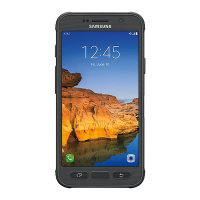31
Gettingstarted
Usingngerprintauthentication
Fingerprint authentication is an authentication sliding your nger over the
ngerprint sensor.
■ Precautions for using ngerprint authentication
• This function is designed to authenticate using the characteristics
information of ngerprint image. For this reason, user with ngerprint
that does not provide enough characteristics information may not be
able to use the ngerprint authentication.
• Scanning several times with the same nger is needed to register your
ngerprint. Do not use dierent ngers to register.
• Authentication performance (the probability of successful ngerprint
authentication for correctly holding down your nger) depends on usage
conditions. Fingerprint registration may be dicult or the authentication
performance may decrease depending on conditions such as the hand is
dry. Taking measures according to the condition of your nger including
washing hands, wiping hands, using a dierent nger for ngerprint
authentication, etc. may improve the authentication performance.
• When registering or authenticating your ngerprint, align the rst joint
of one of your ngers to the center of the sensor, and hold down your
nger. To prevent authentication failure due to dierence in nger
positions at registration and authentication, keep your nger parallel to
the terminal as you place it.
• If you bend your nger or touching the ngerprint sensor with ngertip,
recognition may not be performed normally.
• If you hold down your nger too lightly or take it away too quickly, your
ngerprint may not be recognized correctly. Try as much as possible to
place your nger so that the center of the whorl of the ngerprint comes
to the center of the ngerprint sensor.
• Do not touch the ngerprint sensor before the lock screen appears by
pressing
[Power/Screen lock key] / [Home key]. The ngerprint
sensor may fail to work.
• If ngerprint registration or authentication is started with the nger put
on the ngerprint sensor, activation may fail. Put the nger o from the
ngerprint sensor and retry the operation.
• Fingerprint authentication technology does not guarantee complete
identity authentication or verication. The likelihood of the ngerprint
sensor confusing two dierent ngerprints is very low. However, in
rare cases where separate ngerprints are very similar the sensor
may recognize them as identical. Note that DOCOMO assumes
no responsibility for any damage caused by use of the terminal or
unavailability of the terminal.
■ Usage precautions for ngerprint sensor
• The ngerprint sensor is malfunction may occur if dirt adheres to the surface
of the ngerprint sensor or your nger. Wipe any dirt with a soft cloth before
use. Also wrinkled nger with water may cause malfunction.
• Do not strike the terminal or give a hard shock. May cause failure or
damage. Do not scratch the surface of the ngerprint sensor or pick with
a pointed objected, such as a nib.
• Rubbing hard with a ngernail or hard object such as metal piece of
strap may scratch the surface of the ngerprint sensor.
• Dirt with mud etc. or scratch on the surface of the ngerprint sensor
may cause failure or damage.
• Remove the protective lm attached at the time of purchase and use the
ngerprint sensor. If you use the ngerprint sensor it with the protective
lm attached, it may not work normally.
• Do not attach a sticker or paint with ink etc. on the ngerprint sensor.
• Dirt of dust, sebum, etc. may make ngerprint scanning dicult or reduce
the authentication performance. Clean the surface of the ngerprint
sensor from time to time.
• When ngerprint registration or authentication fails often, clean the
surface of the ngerprint sensor. The phenomenon may be improved.
• To clean the ngerprint sensor, wipe its surface with a dry, soft and
static-free cloth. Long-period use may cause the ngerprint sensor to
get dusty, but do not try to remove the dust with a pointed object even
in such a case.
• Static electricity may cause malfunction. Before placing the nger on the
ngerprint sensor, eliminate static electricity by touching a metal object
with the hand etc. Take particular care in dry seasons such as winter.

